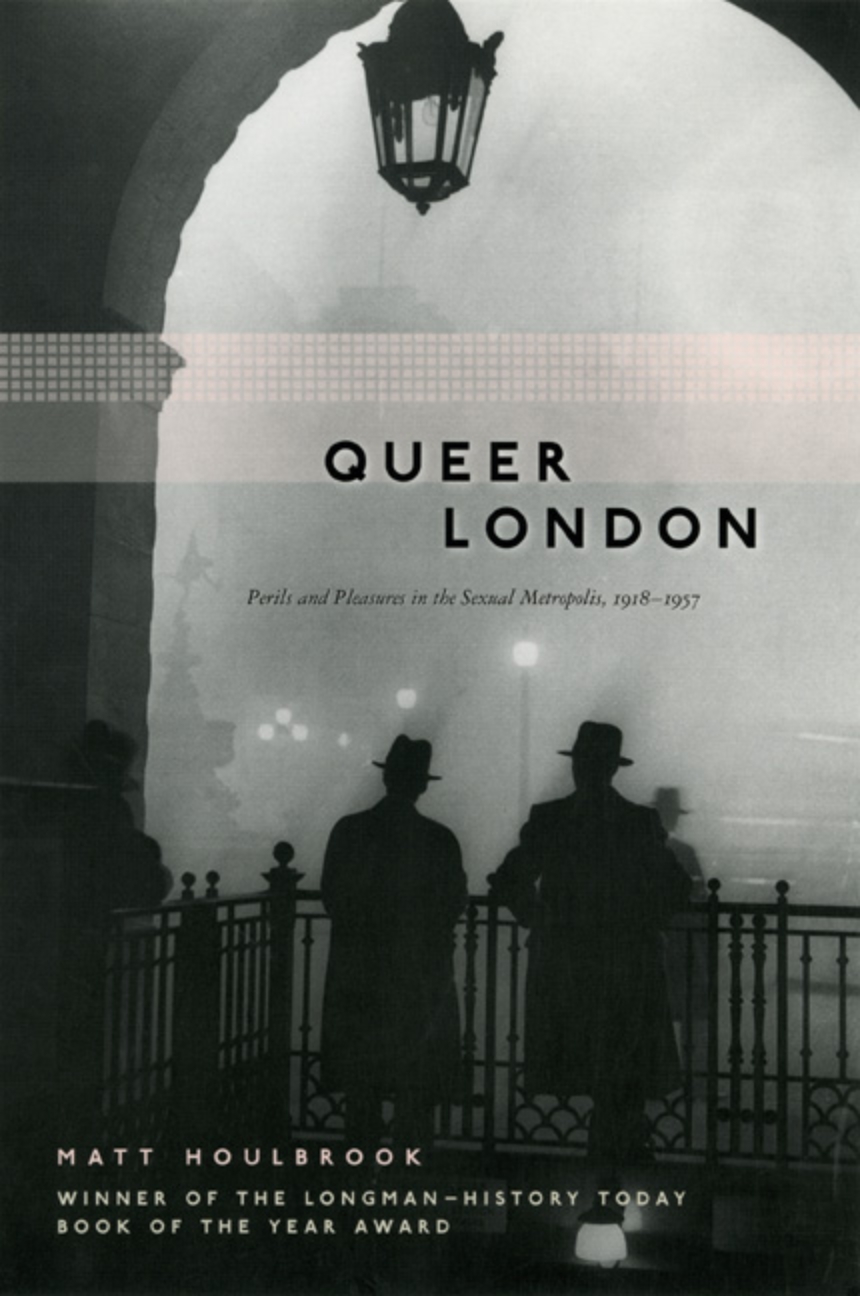Queer London
Perils and Pleasures in the Sexual Metropolis, 1918-1957
In August 1934, young Cyril L. wrote to his friend Billy about all the exciting men he had met, the swinging nightclubs he had visited, and the vibrant new life he had forged for himself in the big city. He wrote, "I have only been queer since I came to London about two years ago, before then I knew nothing about it." London, for Cyril, meant boundless opportunities to explore his newfound sexuality. But his freedom was limite: he was soon arrested, simply for being in a club frequented by queer men.
Cyril’s story is Matt Houlbrook’s point of entry into the queer worlds of early twentieth-century London. Drawing on previously unknown sources, from police reports and newspaper exposés to personal letters, diaries, and the first queer guidebook ever written, Houlbrook here explores the relationship between queer sexualities and modern urban culture that we take for granted today. He revisits the diverse queer lives that took hold in London’s parks and streets; its restaurants, pubs, and dancehalls; and its Turkish bathhouses and hotels—as well as attempts by municipal authorities to control and crack down on those worlds. He also describes how London shaped the culture and politics of queer life—and how London was in turn shaped by the lives of queer men. Ultimately, Houlbrook unveils the complex ways in which men made sense of their desires and who they were. In so doing, he mounts a sustained challenge to conventional understandings of the city as a place of sexual liberation and a unified queer culture.
A history remarkable in its complexity yet intimate in its portraiture, Queer London is a landmark work that redefines queer urban life in England and beyond.
Cyril’s story is Matt Houlbrook’s point of entry into the queer worlds of early twentieth-century London. Drawing on previously unknown sources, from police reports and newspaper exposés to personal letters, diaries, and the first queer guidebook ever written, Houlbrook here explores the relationship between queer sexualities and modern urban culture that we take for granted today. He revisits the diverse queer lives that took hold in London’s parks and streets; its restaurants, pubs, and dancehalls; and its Turkish bathhouses and hotels—as well as attempts by municipal authorities to control and crack down on those worlds. He also describes how London shaped the culture and politics of queer life—and how London was in turn shaped by the lives of queer men. Ultimately, Houlbrook unveils the complex ways in which men made sense of their desires and who they were. In so doing, he mounts a sustained challenge to conventional understandings of the city as a place of sexual liberation and a unified queer culture.
A history remarkable in its complexity yet intimate in its portraiture, Queer London is a landmark work that redefines queer urban life in England and beyond.
“A ground-breaking work. While middle-class lives and writing have tended to compel the attention of most historians of homosexuality, Matt Houlbrook has looked more widely and found a rich seam of new evidence. It has allowed him to construct a complex, compelling account of interwar sexualities and to map a new, intimate geography of London.”—Matt Cook, The Times Higher Education Supplement
Winner of History Today’s Book of the Year Award, 2006
Winner of History Today’s Book of the Year Award, 2006
Read an excerpt.
398 pages | 11 halftones, 1 map | 6 x 9 | © 2005
The Chicago Series on Sexuality, History, and Society
History: British and Irish History, Urban History
Reviews
Table of Contents
List of Illustrations
Acknowledgments
Note on Terminology
List of Abbreviations
Introduction: This Is London
PART 1 POLICING
1. Regulation
PART 2 PLACES
2. Geographies of Public Sex
3. The Pink Shilling
4. The Baths
5. A Room of One’s Own
PART 3 PEOPLE
6. “Piccadilly Palare”: The World of the West End Poof
7. “London’s Bad Boys”: Homosex, Manliness, and Money in Working-Class Culture
8. “The Heart in Exile”: Respectability, Restraint, and the City
PART 4 POLITICS
9. Sexual Difference and Britishness
10. Daring to Speak Whose Name? Queer Cultural Politics
Conclusion
Appendix Queer Incidents Resulting in Proceedings at the Metropolitan Magistrates Courts and City of London Justice Rooms, 1917–57
Notes
Bibliography
Index
Acknowledgments
Note on Terminology
List of Abbreviations
Introduction: This Is London
PART 1 POLICING
1. Regulation
PART 2 PLACES
2. Geographies of Public Sex
3. The Pink Shilling
4. The Baths
5. A Room of One’s Own
PART 3 PEOPLE
6. “Piccadilly Palare”: The World of the West End Poof
7. “London’s Bad Boys”: Homosex, Manliness, and Money in Working-Class Culture
8. “The Heart in Exile”: Respectability, Restraint, and the City
PART 4 POLITICS
9. Sexual Difference and Britishness
10. Daring to Speak Whose Name? Queer Cultural Politics
Conclusion
Appendix Queer Incidents Resulting in Proceedings at the Metropolitan Magistrates Courts and City of London Justice Rooms, 1917–57
Notes
Bibliography
Index
Awards
History Today/Addison Wesley Longman: Longman/History Today Awards
Won
American Library Association: Stonewall Book Award: Gay and Lesbian Book Award
Honorable Mention
Royal Historical Society: Whitfield Prize
Won
